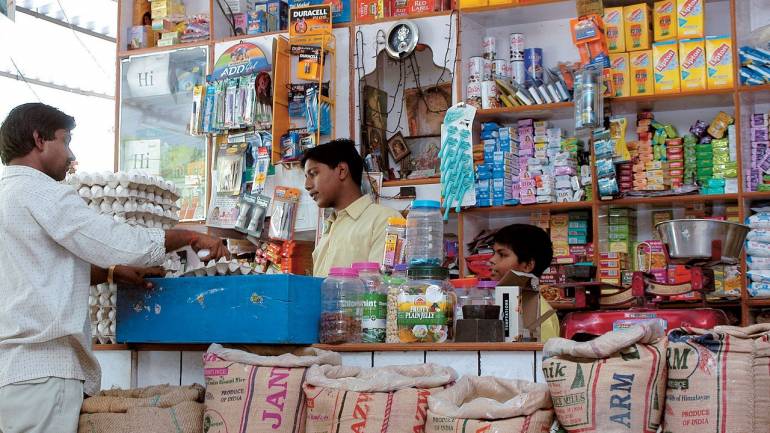
Online retail has changed the way urbanites shop in India. But the local kirana or cloth retail shop which used to consider e-retail as a rival is now logging on to the internet to buy their own wares.
The startup ecosystem has woken up to the huge potential of a USD 100 million addressable market for digitising the supply chain and procurement cycles of unbranded neighbourhood stores, wholesalers, and manufacturers.
Companies such as Wydr, ShopX, and lately the Jaipur-based B2B ecommerce startup WholesaleBox are building data-driven intelligence around the existing wholesale ecosystem, which is helping manufacturers and shopkeepers simplify processes, reduce costs, and widen discoverability across the nation.
These companies offer their marketplace to manufacturers, wholesalers, and retailers, across categories like fashion, home, automotive and electronics.
While Wydr has spread across multiple categories, ShopX deals with daily need products at kirana stores. WholesaleBox, on the other hand, deals only with fashion and lifestyle products.
“Shopkeepers have to be on top of latest fashion trends, ensure uniqueness of designs, and take care of prices. This creates several procurement problems like sourcing from different manufacturing hubs, buying bulk in credit because of limited cash flow, which leaves a lot of unsold inventory at the end of the cycle,” WholesaleBox founder Rohit Dangyach said.
Jaipur-based WholesaleBox caters primarily to the unbranded and regional brand goods market, which accounts for 90 percent of the market, and claims to procure goods at 25 percent lesser cost.
Incepted in 2015 by former IIT Roorkee-IIM Bangalore alumnus and a former CarDekho employee, Rohit Dangyach, WholessaleBox acts as a bridge between manufacturers and the shopkeepers, delivering products at their doorstep at 30% lower prices.
Mobile-based B2B marketplace Wydr, which recently raised an undisclosed amount in a fresh round of funding from its existing investors, is also strengthening its seller base, setting up pan-India offices and is looking at improving its product and technology stack to penetrate deeper in the Indian wholesale market.
“With a platform like Wydr retailers are no more restricted to the local wholesale markets. Neither do they have to travel a long distance to source directly from hubs. Sourcing in bulk from hubs and wholesale markets takes a lot of time and is an expensive affair,” Devesh Rai, founder and CEO of Wydr said.
Wydr was founded in March 2016 by Devesh Rai G, the former founding team member at ShopClues; Hitha Uchil (ex-JWT), and Varun Kumar (ex-Shopclues). It has over 10,000 registered wholesalers and manufacturers across categories with a catalogue size of over 700,000 products.
In a typical offline scenario, merchandise passes through several layers, each adding their own margins leading to an increase of 15-25 percent in prices at which a retailer will procure it.
This escalation of cost also makes online commerce such as Flipkart, Myntra, and Amazon unviable for the small retailers.
Convenient shopping and attractive prices are two arguments in favour of e-commerce.
But with high procurement costs, sellers find it difficult to reduce prices to match the lowest priced product online, without compromising on margins.
“They are forced to keep separate inventory for online and offline. Products that will give higher margin will land up online, compromising on quality. Many e-commerce players started with 10-15 percent margin, and now command about 40 percent, leaving no room for cost manoeuvring. Economies will not support in the long run,” Dangyach of WholesaleBox says.
That probably explains why Dangyach met with immense resentment from sellers and retailers in his first attempt to approach them to read the market. “The moment we would pitch WholesaleBox as an online entity, they would want to disengage. We had to work around our wording to convince them about our product,” he says.
Instead of creating a new infrastructure for the small sellers to create an online presence, strengthening the back-end supply chain and procurement cycles through technology is far more sustainable, according to Amit Sharma, co-founder and CEO of ShopX.
“The front end of small sellers and retailers has to be dealt differently. Force fitting a business that has no digital experience, onto a digital platform, will not work for them. We are building a digital layer around the existing set up and creating a shared economy scenario,” he adds.
Singapore-based Shopmatic, for example, has integrated several digital layers including FB messenger, WhatsApp, e-mail marketing, shipping, accounting, and consumer engagement tools, all in one app to create an online presence at the store level.
“Discoverability and customer loyalty are the two things that will make his cash flow sustainable. First, we make sure their listing is visible across several marketplaces. On the consumer front, we have enabled them with simple chat services for easy conversations,” Anurag Avula, co-founder and CEO of Shopmatic said.
These companies are also helping small sellers and retailers discover trade deals and new product information nationwide, which in turn helps them negotiate better prices, and be in tune with the trending products.
The wholesaler and manufacturer also have a lot to take away from companies such as Wydr and WholesaleBox.
With over one million retailers, Wydr provides wholesalers with an exposure to a bulk buyer base. Manufacturers and wholesalers are not restricted to their own region for business. They can sell to any part of the country without having to invest in sales.
“Manufacturers and wholesalers often sell on credit because of cash flow restraints of small retailers. This creates delays in payment cycles, which is a big pain point for them. There is also a lot of unused inventory lying with manufacturers which is eventually sold at throwaway prices, increasing overheads,” Dangyach of WholesaleBox says.
The company, including its peers, ensure a steady 15-day payment cycle to manufactures and wholesalers and maintains an active inventory listing online which is updated with each sale to avoid pilferage.
Manufacturers can also read simplified analytics on which geographical location is showing the most traction for which colours and patterns, and so on.
It's a win-win for manufacturers as they get visibility of cash flows and reduce risk of unstructured credit, thereby lowering costs and even improve their realizations.
Shops also get doorstep delivery, small and frequent supplies, trade assurance and tools to ramp up their offline sales.


 Union Budget 2018: Significant economic presence would be created if the aggregate payments from India for download of goods and services in India would exceed a certain amount to be specified later.
Union Budget 2018: Significant economic presence would be created if the aggregate payments from India for download of goods and services in India would exceed a certain amount to be specified later.